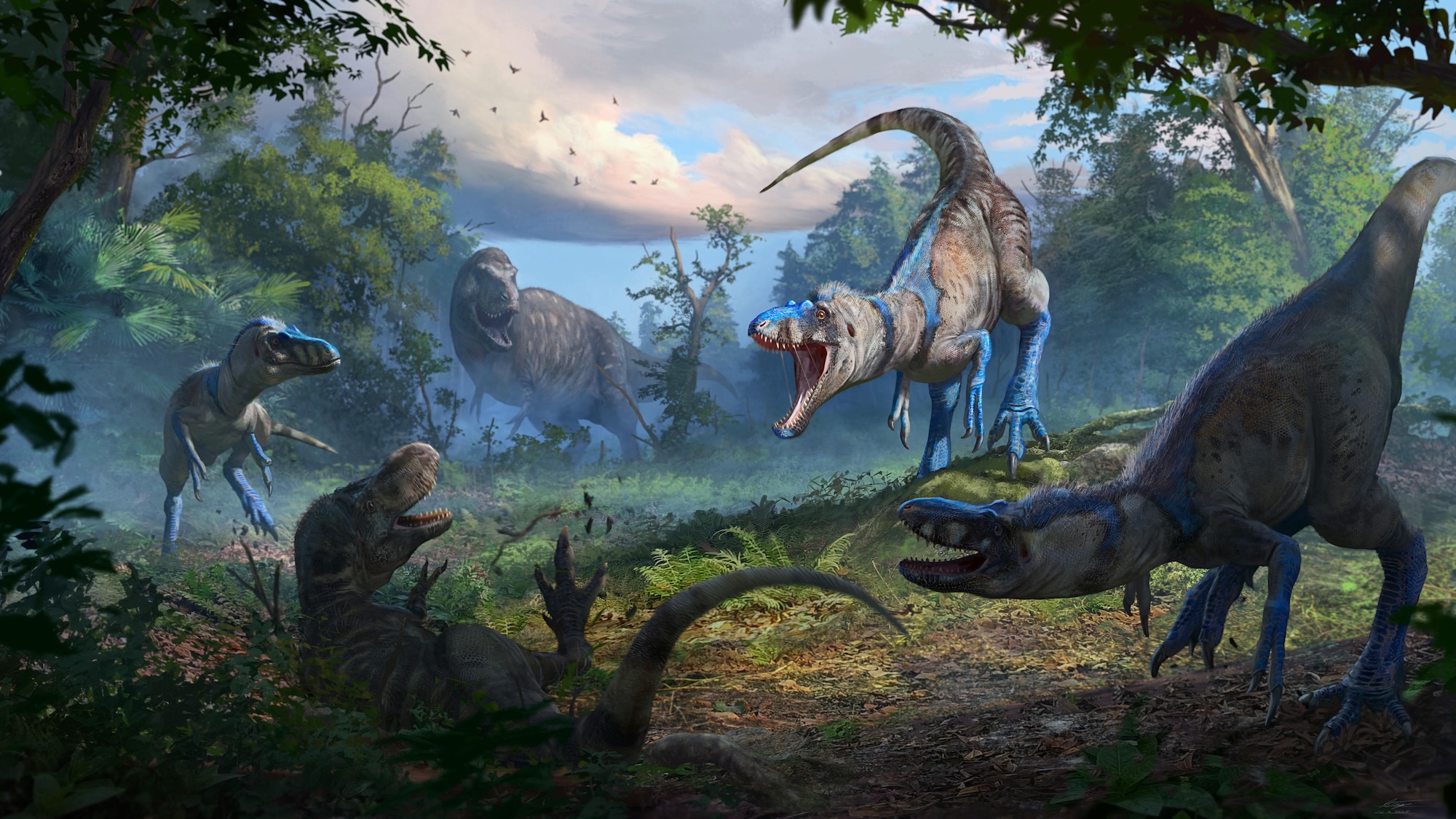Science
Tiny T. Rex Relative Identified as New Species in North America

Paleontologists have confirmed the existence of a new dinosaur species closely related to the iconic Tyrannosaurus rex. Researchers from North Carolina State University and Ohio University have established that fossils found in Montana, previously debated as juvenile T. rex specimens, actually belong to a distinct species named Nanotyrannus lancensis. This finding, published on October 30, 2023, in the journal Nature, provides significant insights into the diversity of predators during the late Cretaceous period.
The debate surrounding the classification of these fossils has spanned decades, primarily focusing on a skull discovered in 1946 at the Hell Creek Formation. Initially classified as a species of Gorgosaurus, some researchers later postulated that it might instead represent a juvenile T. rex. This contention created a divide within the paleontological community, as some argued that the skull exhibited features common to both juvenile tyrannosaurids and adult T. rex.
In their study, paleontologists Lindsay Zanno and Lawrence Witmer outlined their findings from a recent expedition to the Hell Creek Formation, where their team unearthed a remarkably preserved and skeletally complete tyrannosauroid specimen. Their analysis of the approximately 67-million-year-old remains confirmed that both this recent discovery and the 1946 skull belonged to Nanotyrannus.
A crucial factor in their conclusion was the age of the new specimen. The researchers conducted a morphological analysis indicating that the bones were nearly fully grown, suggesting they did not belong to a juvenile. Additional modeling revealed that Nanotyrannus exhibited different bone growth patterns compared to T. rex, reinforcing their classification as a separate genus. As a result, the study identifies at least two species within the Nanotyrannus genus: Nanotyrannus lancensis and Nanotyrannus lethaeus.
In terms of size, adult Nanotyrannus reached approximately 18 feet in length and weighed around 1,550 pounds, significantly smaller than its larger cousin, which could grow over 42 feet long and weigh more than nine tons. While T. rex evolved to dominate with brute strength, featuring thick legs and a powerful bite, Nanotyrannus developed longer legs and strong arms, allowing it to be agile and swift in its hunting techniques.
The recognition of Nanotyrannus indicates that T. rex likely coexisted with this smaller relative for at least one million years leading up to the Cretaceous-Paleogene extinction event. This discovery challenges the prevailing notion that dinosaurs were in decline before their eventual extinction, suggesting instead that they were thriving and exhibited greater diversity than previously understood.
The study’s authors assert, “Our results undermine a nearly uniform consensus among theropod specialists and rectify a significant taxonomic error underpinning decades of research.” They emphasize the broader implications of their findings for understanding dinosaur evolution and diversity during this period.
As the debate surrounding Nanotyrannus continues, this new classification has the potential to reshape paleontological perspectives on the ecosystems of the late Cretaceous and the evolutionary paths of its formidable predators.
-

 Science2 weeks ago
Science2 weeks agoResearchers Challenge 200-Year-Old Physics Principle with Atomic Engines
-

 Politics2 weeks ago
Politics2 weeks agoNHP Foundation Secures Land for 158 Affordable Apartments in Denver
-

 World6 days ago
World6 days agoBoeing’s Aircraft Production: Assessing Numbers and Challenges
-

 Entertainment5 days ago
Entertainment5 days agoSyracuse Stage Delivers Lively Adaptation of ‘The 39 Steps’
-

 Health2 weeks ago
Health2 weeks agoNeuroscientist Advocates for Flag Football Until Age 14
-

 Lifestyle2 weeks ago
Lifestyle2 weeks agoLongtime Friends Face Heartbreak After Loss and Isolation
-

 Lifestyle4 days ago
Lifestyle4 days agoTrump’s Push to Censor National Parks Faces Growing Backlash
-

 World2 weeks ago
World2 weeks agoGlobal Military Spending: Air Forces Ranked by Budget and Capability
-

 Lifestyle5 days ago
Lifestyle5 days agoRed Bluff High School’s Elli Nolan Named Rotary Student of the Month
-

 Science5 days ago
Science5 days agoAI Misidentifies Doritos Bag as Gun, Triggers Police Response
-

 Politics4 days ago
Politics4 days agoNFL Confirms Star-Studded Halftime Show for Super Bowl LVIII
-

 Health2 weeks ago
Health2 weeks agoFDA Launches Fast-Track Review for Nine Innovative Therapies









